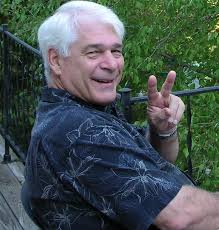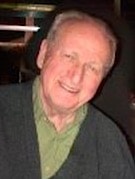by Mike Metz

Mike Metz, PhD
Compensation for hearing-impaired workers has been sort of on the back burner for many years. Audiologists are occasionally called upon to measure and compute the hearing disability associated with hearing injuries resulting from workplace noise exposure. A potentially larger issue of workplace hearing loss involves “fitness for duty” decisions.
Audiologists are increasingly being asked to provide input on issues of the hearing abilities of workers who are or will be in contact or interact with the public, including police, fire fighters, municipal workers, pilots, professional drivers, machine operators, and other occupations.
While the “disability” considerations have slowly evolved with respect to noise damage, protection, and compensation, the fitness for duty area suffers from an inability to define and demonstrate what it means to “return hearing ability to normal”.
Functional Hearing Ability
The necessary functional hearing abilities for many “public sector” jobs have been exhaustively defined, and it is common for there to be listed a necessity to hear under difficult circumstances. Hearing ability in these situations goes well beyond the ability to pass a test at “normal” pure tone or speech levels.
While there are tests for functional hearing abilities (hearing in noise, sound localization, parsing various auditory signals as in sonar, radio communication, etc.), such abilities are seldom assessed in clinical situations to determine if a worker can function in any specific difficult circumstance that could be encountered during the performance of duties.
Testing for “benefit” with hearing aids does not usually go beyond measuring improvement of audibility for pure tones and simple speech tasks. Standard tests quantifying “impairment” for workers’ compensation purposes generally deal only with aided versus unaided pure tone thresholds.
These tests do not encompass the spectrum of hearing necessary to demonstrate “normal” hearing ability in a worker who may encounter something other than a “normal” condition in their working environment. Increasingly, public entities—cities, public service groups, governments, and industries—seek methods to assure that hearing impaired workers, especially those whose work takes them into contact with the public, can function in a manner consistent with other workers who are considered “normal hearing”.
Has Audiology Met the Challenge?
How has audiology met the challenge of assuring that those we help to hear really do hear normally (or closer to normal) in those situations that are “challenging”? What tests are offered that reliably demonstrate that these workers are as safe as a normal hearing worker?
How would you go about writing a protocol to assure worker and public safety? Perhaps after assessing the necessary hearing abilities required or desired in the normal as well as the unusual situations encountered in these jobs, you would propose methods and tests that would assure the employing agency that their workers can function in difficult situations in what could legally be considered a “normal” fashion.
In the past, it has been the usual case that some local “expert” audiologists and physicians are consulted and asked to comment on proposed new methods. If you were allowed to review the comments of these local experts, you would be astounded to learn that they generally recommend no additional tests than those initially developed in the 1960s and 1970s, and, not so incidentally, are the very tests used by these “experts”. That is, they recommend no tests other than pure tone thresholds and simple masked speech tasks. Essentially, they ignore the hearing research of the past 20-25 years, and instead recommend using tests that can be decades old.
As an example, consider a moderately hearing impaired worker who must function in the presence of machine noise, crowd, or other background noise. Given that even moderate, sensory hearing losses may be accompanied by a significant decrease in that person’s ability to hear in background noise (a signal-to-noise ratio loss or “snr” loss), and given that many hearing aid users complain of problems in noise, how would you defend your definition of “normal with the use of hearing aids” if you only show that your patient had “aided thresholds” and “aided speech scores” in the normal range while using hearing devices?
An “SNR hearing loss” is only one aspect of functional hearing that is needed to keep many of these workers sufficiently aware of their environment so to be considered as “normal hearing”. The ability to localize voices, sounds, or noises can be critical in many extraordinary circumstances encountered by these workers. If asked to assure that these workers using hearing aids can “functionally hear normally” in these extraordinary situations, shouldn’t some sort of data be offered?
For those of you who have espoused the old ways of testing hearing aid benefit, may I ask you that, if you are called upon to help a company, municipality, or government agency make determinations of normal hearing function, you remember that we have come some distance from the 1970s ways of measuring.
Mike Metz, PhD, has been a practicing audiologist for over 45 years, having taught in several university settings and, in partnership with Bob Sandlin, providing continuing education for audiology and dispensing in California for over 3 decades. Mike owned and operated a private practice in Southern California for over 30 years. He has been professionally active in such areas as electric response testing, hearing conservation, hearing aid dispensing, and legal/ethical issues. He continues to practice in a limited manner in Irvine, California.
*featured image courtesy wellnessrenaissance






